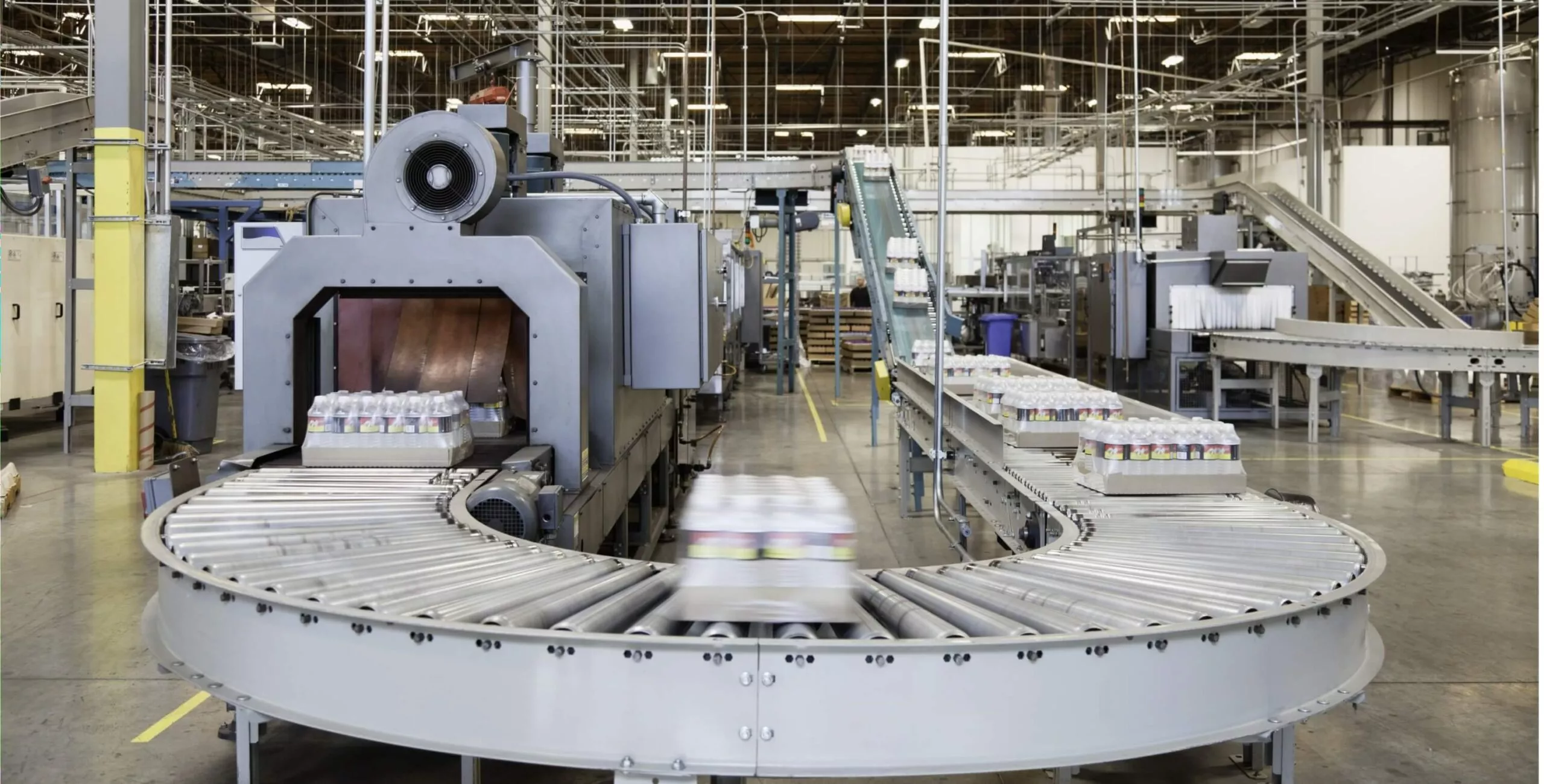If you’re managing a facility, keeping track of its condition is an important part of ensuring it stays safe and functional. The Facility Condition Assessment (FCA) checklist helps you stay on top of things, making sure you don’t miss any important details. Whether you’re planning maintenance, budgeting for repairs, or just trying to improve overall efficiency, this checklist will be your go-to tool for a smooth and organized approach. In the next sections, we’ll take a closer look at what FCA is all about and why it’s so important.
Why You Should Do a Facility Condition Assessment
Doing a Facility Condition Assessment (FCA) helps you stay ahead of problems. Instead of waiting for things to break down, you get a clear picture of what needs attention first. This gives you time to plan your budget and avoid sudden repair costs. Fixing things early is always cheaper than waiting for them to fall apart. An FCA also shows you the best ways to take care of your facility so that it runs better and lasts longer.
Who Uses a Facility Condition Assessment Checklist?
-
Facility Managers
Facility managers rely on this checklist to stay on top of building performance. It helps them assess what systems are working fine and what areas need attention. By following the checklist, they can make informed decisions on scheduling maintenance, preventing breakdowns, and improving energy efficiency.
-
Maintenance Personnel
For the maintenance team, the checklist acts like a daily or weekly guide. It directs them toward specific areas that need adjustment, maintenance or repair. This structured approach makes routine inspections more efficient and ensures that nothing important is overlooked.
-
Safety Inspectors
Inspectors use the FCA checklist to make sure buildings follow all safety, fire, and environmental regulations. It helps them spot hazards, check compliance, and ensure that safety measures are in place and up to date.
-
Property Owners
Owners often use the checklist to get a high-level overview of the condition of their property. It helps them make investment decisions, schedule upgrades, or plan property sales or renovations with a full understanding of what the building needs.
Facility Condition Assessment (FCA) Checklist
Before the assessment begins, it’s important for you (the building owner or manager) to share all the necessary documents, access details, and past maintenance records with the consulting team. This helps them carry out a complete and accurate audit.
Here’s a detailed checklist to guide you through the process:
-
Exterior Building Elements
The exterior of your building faces daily wear and tear due to weather conditions. A detailed evaluation of these areas can prevent costly repairs down the line.
- Roofing System: Check for leaks, cracks, damaged shingles, and poor drainage. Roof maintenance is necessary to prevent water damage inside the building.
- Exterior Walls: Look for cracks, peeling paint, water damage, or mold. These issues can impact insulation and structural integrity.
- Windows and Doors: Ensure all windows and doors open and close easily. Check for broken seals, cracks, or signs of water leakage.
- Foundation and Structure: Look for visible cracks in the foundation or shifts that may signal a larger structural issue. Foundation problems can lead to significant structural damage.
- Exterior Finishes (paint, siding, etc.): Inspect the condition of paint, siding, or stucco for signs of damage or wear, and check if the surfaces need repainting or repair.
-
Interior Building Elements
The interior of your building impacts the comfort and safety of the people who use it daily. Regular checks ensure everything remains functional and safe.
- Floors and Floor Coverings: Check for uneven surfaces, cracks, or water damage. Worn carpets or tiles should be noted for replacement.
- Walls and Wall Coverings: Look for signs of cracking, water damage, or mold. Wall coverings like paint or wallpaper should be inspected for peeling or damage.
- Ceilings: Watch for stains, cracks, or sagging, which can indicate underlying water damage or structural problems.
- Interior Finishes: Assess the condition of trim, molding, and other interior finishes. Ensure everything is secure and in good condition.
- Stairs and Elevators: Make sure stairs are secure, with no loose steps or handrails. Elevators should be tested for proper function and safety.
-
Structural Components
Structural integrity is the foundation of your building’s safety. These areas require close attention to ensure the building is stable and secure.
- Beams and Columns: Inspect for rust, cracks, or other signs of deterioration. Any issues could signal a weakening of the building’s support.
- Floors and Ceilings: Check for uneven flooring or structural shifts. These could indicate foundational problems.
- Stairs and Handrails: Ensure stairs are in good condition with secure handrails. Any broken steps or loose handrails should be addressed immediately.
- Structural Integrity: Overall, evaluate the building for any signs of instability, such as shifting walls or floors.
-
Mechanical Systems
Your mechanical systems (HVAC, plumbing, electrical) are essential for the day-to-day functioning of your building. Regular checks will prevent costly repairs later.
- HVAC Systems: Inspect heating, ventilation, and air conditioning units for functionality. Check for leaks, reduced airflow, or irregular heating/cooling.
- Plumbing Systems: Look for leaks, water pressure issues, or clogged drains. Test fixtures like faucets, toilets, and showers to ensure proper function.
- Electrical Systems: Test wiring, outlets, panels, and circuit breakers. Check for any frayed wires, overloaded circuits, or outdated electrical systems.
- Fire Protection Systems: Ensure sprinklers, alarms, extinguishers, and smoke detectors are working properly.
- Elevators and Escalators: These systems should be inspected for safety compliance and functioning. Look for any unusual noises or malfunctions.
-
Life Safety and Security
Safety features protect your building’s occupants. Proper maintenance of these systems is crucial for compliance and protection.
- Fire Detection and Suppression Systems: Verify that fire alarms, smoke detectors, and sprinklers are functional. Check that fire extinguishers are accessible and up to code.
- Emergency Exits and Lighting: Ensure that all emergency exits are unobstructed and that emergency lighting is working.
- Security Systems: Inspect cameras, alarm systems, and access control to ensure all are functioning properly.
-
Lighting
Lighting affects both safety and comfort. Regular checks can improve efficiency and reduce energy costs.
- Interior Lighting: Ensure that lights in all rooms, hallways, and staircases are functioning properly.
- Exterior Lighting: Check that parking lots, walkways, and building entrances are well-lit for safety.
-
Site and Grounds
The external environment around your building plays a role in both its aesthetic appeal and safety.
- Parking Lot Conditions: Inspect for potholes, damaged curbs, and proper drainage. A poorly maintained parking lot can be hazardous.
- Landscaping: Ensure shrubs and trees are trimmed, and the lawn is well-maintained. Overgrown plants can cause damage or block pathways.
- Sidewalks and Pathways: Check for cracks or uneven surfaces that could pose tripping hazards.
- Fencing and Gates: Inspect fences for damage or wear. Ensure gates open and close securely.
-
Accessibility
Ensure your building is accessible to everyone, including people with disabilities. Proper access is not only a legal requirement but also supports inclusivity.
- ADA Compliance: Verify that your building meets accessibility standards.
- Handicap-Accessible Ramps and Entrances: Ensure ramps are functional, properly sloped, and equipped with handrails.
- Elevator Accessibility: Confirm that elevators are properly equipped and operational for individuals with mobility challenges.
-
Environmental and Regulatory Compliance
Ensure your building is compliant with environmental standards and local building codes to avoid penalties and reduce its environmental impact.
- Hazardous Materials: Check for asbestos, lead paint, or other hazardous substances that need to be removed or contained.
- Building Codes: Ensure the building meets current local regulations and standards.
- Environmental Impact: Review the building’s energy use, water conservation practices, and overall environmental footprint.
-
Space Utilization
Proper space planning ensures that your building is being used efficiently, which can improve productivity and comfort.
- Office and Workspace Layout: Assess whether the space is being used right. Look for areas of congestion or underused spaces.
- Storage Areas: Check the organization and accessibility of storage spaces to ensure they’re efficient.
- Common Areas: Check shared spaces like lobbies, kitchens, or break rooms for functionality and comfort.
-
Technology and Communication Systems
Modern buildings rely heavily on technology. A review of these systems ensures they are up to date and functioning correctly.
- IT Infrastructure: Test networks, servers, and cabling to ensure everything is working smoothly.
- Communication Systems: Check phone lines, internet connections, and internal communication networks for reliability.
-
Energy Efficiency
Assessing energy efficiency not only reduces operating costs but also makes your building more sustainable. Here’s everything that you should check:
- Insulation and Windows: Inspect windows and insulation for leaks, drafts, and energy inefficiency.
- Lighting Efficiency: Ensure that lighting systems are energy-efficient, such as using LED bulbs.
- HVAC System Efficiency: Regularly service HVAC systems to ensure optimal energy use.
-
Maintenance and Housekeeping
Routine cleaning and maintenance are important for maintaining the building’s appearance and functionality.
- Cleaning Services: Ensure cleaning is happening regularly and thoroughly.
- Routine Maintenance: Confirm that regular inspections and small repairs are being handled.
- Record-Keeping: Keep logs of maintenance tasks and repairs to track ongoing issues.
-
Documentation and Record-Keeping
Proper documentation helps with tracking repairs, renovations, and maintenance needs.
- As-Built Drawings: Keep a record of building plans and layouts.
- Maintenance Logs: Keep detailed records of all maintenance work done.
- Warranties and Equipment Manuals: Ensure all relevant documents are kept up to date.
-
Budget and Cost Analysis
A detailed cost analysis helps you plan for repairs and upgrades, ensuring you have the funds available when needed.
- Repair Estimates: Gather quotes for any necessary repairs or maintenance.
- Long-Term Budget: Forecast upcoming expenses for renovations or large-scale repairs.
-
Future Capital Improvement Needs
Planning for future needs can help you prepare for upgrades and avoid last-minute expenses.
- Potential Upgrades: Identify areas that might need renovation or system upgrades in the next few years.
-
Safety Protocols
Having clear safety protocols in place is crucial for any facility.
- Emergency Response Plans: Make sure there are clear procedures in place for all emergency situations.
- First Aid Stations and Equipment: Ensure first aid kits are accessible, and employees are trained in emergency procedures.
-
General Observations and Recommendations
Use this section to add any other comments or suggestions for improvement.
- Visual Impressions: Any areas that look run-down or need attention.
- Improvement Ideas: Suggestions to enhance the building’s function, safety, or aesthetic appeal.
What to Check During FCA (Facility Condition Assessment)
-
Asset Inventory:
Start by creating a complete list of all the assets in your facility. This includes equipment, utilities, and any structural components. A detailed inventory helps you keep track of what you have and where it’s located.
-
Location Mapping:
Make sure each asset is logged in your facility management software. Accurate location mapping allows you to find assets quickly and keep everything organized for easy reference.
-
Documenting Asset Age:
Record the age of each asset to understand where it stands in its lifecycle. Knowing the age helps you predict when maintenance might be needed or when it’s time to think about replacing something.
-
Expected Useful Life:
Assess how long each asset is expected to last. By knowing the life expectancy, you can better plan for future replacements or upgrades without surprises.
-
Lifecycle Assessment:
Identify which assets are nearing the end of their useful life or showing signs of wear and tear. These should be given extra attention during your inspection to determine if repairs or replacements are necessary.
-
Condition Evaluation:
Conduct a thorough inspection of each asset to evaluate its condition. Check for any damage, wear, or maintenance issues. This will help you spot problems before they become bigger and more expensive.
-
Code Compliance Check:
Verify that your assets and the facility as a whole are compliant with relevant building codes and regulations. If you find any violations, note them so they can be addressed.
-
Functionality Evaluation:
Take a close look at how well your facility and its assets are performing. Consider whether the layout works efficiently, if the equipment is functioning as it should, and whether users are satisfied with the space.
-
Identifying Remedial Actions:
Based on your inspections, recommend any actions that need to be taken, such as repairs, replacements, or upgrades. Identifying issues early allows you to tackle them before they cause bigger problems.
-
Prioritization of Tasks:
Once you’ve identified the maintenance needs, prioritize them based on severity and their impact on facility operations. This helps ensure that the most critical issues are addressed first.
-
Cost Estimation:
Estimate the costs involved in carrying out the necessary maintenance and upgrades. This step will give you a clear picture of the budget needed and help you plan ahead.
Best Ways to Use Your FCA Report
-
Prioritize Repairs and Maintenance
The FCA report usually comes with a list of issues ranked by urgency. This helps you figure out what needs to be fixed right away and what can wait. For example, fixing a roof leak would come before repainting a hallway. Prioritizing helps you prevent damage and avoid spending more later on larger repairs.
-
Budget for the Future
Good FCA reports also look ahead. They include short-term and long-term plans, so you know what costs are coming and can budget accordingly. Whether it’s planning for HVAC replacement five years from now or redoing plumbing in phases, having a roadmap helps you stay prepared and financially stable.
-
Plan for Capital Improvements
Beyond everyday maintenance, an FCA might reveal the need for major upgrades. These are larger projects that impact building function, such as replacing old elevators or upgrading lighting systems to meet new codes. Knowing about these in advance allows you to explore financing options and plan timelines with minimal disruption to operations.
-
Stay Compliant with Regulations
The FCA may highlight issues that could affect your building’s legal compliance. It could be something as small as a missing fire extinguisher or as serious as unsafe wiring. Catching these problems early gives you time to correct them and avoid fines or shutdowns.
-
Monitor the Condition Over Time
Think of your FCA report as a benchmark. You can use it to track how the building’s condition changes over time. Follow-up assessments help you measure whether past issues have been fixed and reveal any new ones. This ongoing record is useful not just for maintenance but also for long-term asset planning.
Ready to simplify your Facility Condition Assessment?
NEXGEN’s powerful asset management software helps you track assets, map locations, assess conditions, and prioritize repairs all in one place. With real-time data and easy-to-use tools, NEXGEN helps you stay ahead of maintenance and avoid costly surprises.
Start your free demo today and see how NEXGEN can transform your facility management.





